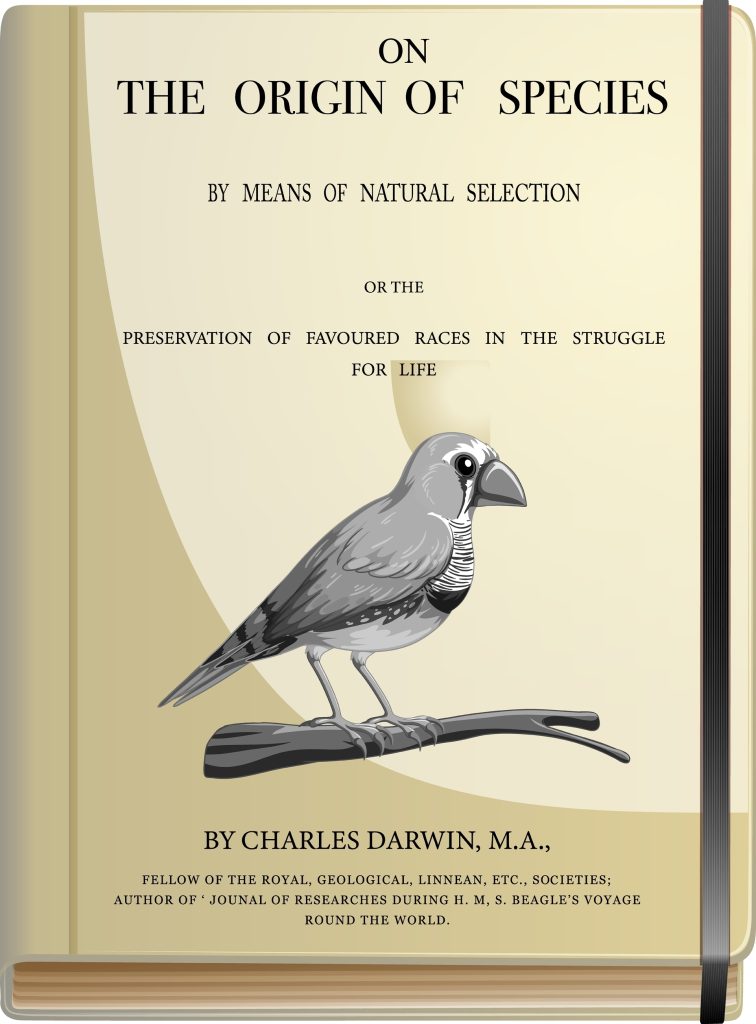CRITIQUE OF THE PROGRAMMED AGING RATIONALE
“To hold to the idea that ageing is programmed, in the face of the evolutionary logic and experimental evidence to the contrary, is as unpromising a scientific stance as to continue to assert that the sun orbits the earth.” – Thomas Kirkwood
Thomas Kuhn explained that although most of the work of science is “normal science” which is conducted within the parameters of the then prevailing paradigm, truly significant scientific progress occurs during periodic “scientific revolutions,” which occur only when there is a paradigm shift. A paradigm shift occurs when a new way of looking at a settled paradigm results in a change in the very notion of reality. At the beginning of the 20th Century, no one questioned the then-current physics paradigm, and many physicists assumed that all of the big questions had been answered. But then, in 1905, Einstein published his work on relativity. That work resulted in a scientific revolution that arguably continues to this day. That’s in large part because Einstein, and the physicists who followed him, recognized that questioning and attempting to improve upon the existing paradigm should be the goal of any field of science.
The Institute takes the position that the reason that aging-related science has been so stagnant is that there has never been any challenge to the aging paradigm. That’s remarkable considering that the key preconception of the aging paradigm – that FDS is an inevitable, natural, genetically inherited trait – is inconsistent with the theory of evolution. Darwin knew it. Every aging theorist since Darwin has known it. But rather than acknowledging that our understanding of the nature of aging itself is flawed, aging theorists have tried to contort Darwin’s theory to make it accommodate the misconceptions that make up the paradigm.

Since Darwin introduced his Theory of Evolution more than 160 years ago, the two rationales that he proposed have not only framed the debate over the nature of aging, but have been considered the only possible constructs. The first of the two rationales is that the mortality associated with aging might be the intended result of genetic programming. If a finite lifespan benefits a species as a whole, perhaps evolution would have selected traits that result in the death of the individual members of the species. Aging theorists use the term Programmed Aging or “PA” to describe this rationale. The PA rational is based on the assumption that humans, and substantially all other complex organisms, have a distinct physiological aging mechanism that exists solely for the purpose of pro-actively limiting the organism’s lifespan.
Since the time that Darwin proposed his theory, the universal assumption has been that, in order for Darwin’s theory to be correct, one of his two rationales must be correct. Scientific developments over the past 160 years have proven beyond dispute that Darwin’s theory is correct. Thus, the academic debate over the question of aging is assumed to be a choice between the two rationales proffered by Darwin. It’s important to note that the science of genetics did not exist when On the Origin of Species was published in 1859. Genetics explains how the traits chosen by natural selection are inherited by offspring. So although Darwin could not phrase it in such terms, his theory actually tells us what genes are inherited by offspring. But environmental factors heavily influence phenotype. All chickens inherit genes that would allow them to fly. But, because of environmental factors, most of us have never seen a chicken fly. The development of genetics, and the notion that phenotype does not necessarily match genetic potential, offers a third option that was unavailable to Darwin. That third alternative is the foundational premise of the New Paradigm. FDS is not a genetically inherited trait, but is rather the result of one or more environmental factors causing phenotype to differ from genetic potential.

Each of the two rationales proffered by Darwin is an attempt to explain how a trait – FDS – that is clearly inconsistent with the principles of natural selection, could have become part of the genome. Each camp has done an excellent job of explaining why the competing rationale is fatally flawed. But neither has succeeded in putting forth a compelling argument as to why its rationale is correct. That’s because the task is akin to explaining why the earth is flat. Each of the two camps is trying to prove why a false premise is true.
The Institute offers a simple and obvious third alternative. The PA and NPA camps are unable to explain why FDS is a genetically inherited trait because it is not. Instead, FDS is a degenerative disorder caused by an environmental agent preventing the human maintenance system from being fully effective. As will be discussed in this and other essays, that seemingly small change in focus requires a paradigm shift – an alteration of our understanding of the reality of aging itself.
One of the reasons that it has proven to be so difficult to challenge the “aging paradigm” is that there is no single paradigm or theory to question. Instead, based upon a variety of assumptions and preconceptions, some of which are dubious and others of which are clearly flawed, there are two competing paradigms, each of which has more than one iteration. This essay will focus on the first of the two – the Programmed Aging rationale. It will address some of the flaws in the PA rationale, and demonstrate that the New Paradigm sets forth a much-improved conceptual framework.
Overview of Programmed Aging Rationale
Everyone has always assumed that “aging” is a natural process that is common to all animals. Darwin’s theory of evolution was inconsistent with that assumption. Questioning whether FDS was natural was not an option for Darwin. Since the science of genetics did not then exist, he could not have been aware that it is possible for environmental factors to cause phenotype to vary significantly from genetic potential. Also, at a time when religion carried a great deal of weight, suggesting that humanity was not subject to an aging process that inevitably results in death would have bordered on heresy. So Darwin needed to come up with a rationale that explained how his theory could be correct even though it contradicted what “everyone knew” to be true about aging. Since that time, the two alternative rationales suggested by Darwin have been universally accepted to be the only two possibilities.
In a universe where there are only two choices, a frequently used strategy is to attempt to eliminate the alternative. Thus the academic literature in this area contains many excellent articles by NPA proponents that explain in excruciating detail why the PA paradigm cannot possibly be correct.¹ The Institute agrees with the NPA proponents that believing that all species have a genetically programmed aging mechanism is a primitive belief akin to believing that the sun revolves around the earth. This essay will not repeat all of the evidence or arguments. Instead it will focus on a few highlights, with an emphasis on how the New Paradigm does a much better job of explaining empirical data, while being completely consistent with the principles of natural selection.
The PA paradigm is a rationale rather than a theory because, among other things, it merely suggests how the existence of a hypothetical aging mechanism could be consistent with evolution. A physiological process that causes progressive dysfunctionality would be detrimental to any individual organism. Thus evolutionary principles mandate that such a mechanism would have been rejected by natural selection. The PA rationale is that such a mechanism was selected because a finite lifespan benefits a species as a whole. PA proponents do not present a compelling argument that such a mechanism is essential for the survival of any particular species, much less all species or the human species. Moreover, adherents to the PA paradigm have not been able to discover any convincing evidence of the existence of an aging mechanism, per se. For empirical data, they rely primarily on the observation that in substantially all organisms, intrinsic damage tends to accumulate with advancing chronological age. They combine that fact with the false preconception that maintenance is easy, and arrive at the conclusion that evolution must consider a finite lifespan to be a desirable trait.

The Search for the Killer Gene
The only direct piece of empirical evidence that arguably supports the PA rationale is the 1993 discovery that a single-gene mutation could double the lifespan of C. elegans (a roundworm). The logic appears to be something along the lines of, if one species has an aging gene, then it’s likely that all do.
The likely explanation for the popularity of the PA approach is that, if aging is imposed by a particular biological mechanism (such as the roundworm’s killer gene), then it is likely that a pharmaceutical intervention or genetic manipulation would be able to interfere with the operation of that mechanism, thus greatly increasing human longevity. That story is simple to understand, which greatly facilitates efforts by scientists and/or start-up companies to obtain funding for the search for the killer gene in other species.
Aging in Other Species
Aging theorists have long noted the fact that the longevity of otherwise similar species can vary remarkably. Proponents of the PA paradigm point to this as evidence that longevity is genetically determined and developed through an evolutionary process in a way similar to the one that determines other species-specific characteristics.² That means that a particular physiological process/system must have evolved in different ways in different species. So, goes the PA argument, all organisms must possess complex evolved mechanisms that exist for the purpose of pro-actively limiting the organism’s lifespan beyond a species-specific age.³
One of the ways in which the New Paradigm is clearly superior to the PA paradigm (and NPA paradigm, for that matter) is that it offers a straightforward explanation not only as to what determines species-specific longevity (the capabilities of the maintenance system of the subject species) but also, applying evolutionary principles, why that is the only possible result. These concepts are discussed in the essay entitled “Aging in Other Species.”
- See, e.g., Kowald A, Kirkwood TBL. Can aging be programmed? A critical literature review, Aging Cell. (2016); De Grey, ADNJ, Do we have genes that exist to hasten aging? New data, new arguments but the answer is still no, Current Aging Science (2015); Kirkwood TBL and Melov S, On the programmed/non-programmed nature of ageing within the life history, Curr. Biol. (2011).
- Goldsmith TC, On the programmed/non-programmed aging controversy, Biochemistry (2012).
- Id.
